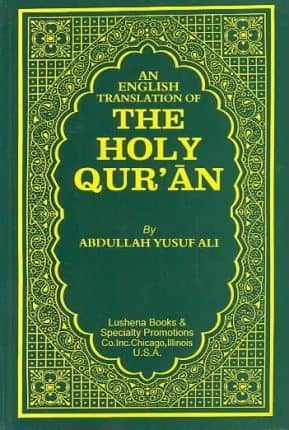‘Translation Of The Holy Quran’ PDF Quick download link is given at the bottom of this article. You can see the PDF demo, size of the PDF, page numbers, and direct download Free PDF of ‘Quran Translation’ using the download button.
Translation Of The Holy Quran Book PDF Free Download

RELATION TO SUNNAH
The Holy Quran is the fountain-head from which all the teachings of Islam are drawn, and it is the only absolute and final authority in all discussions relating to the religion of Islam.
The Sunnah, meaning mode of life, and especially the course of the Holy Prophet’s life, is used in the religious terminology of Islam to indicate practices and sayings of the Holy Prophet.
Hades, which means originally news, carries the same significance. The Sunnah, or Hadis, as signifying the precept and example of the Holy Prophet, is a secondary source of the law of Islam.
The true relation of the Quran and the Sunnah has often been misunderstood, and that not only by non-Muslim critics but even by some sections of the Muslim community.
There is a tendency in some quarters to attach over importance to the Sunnah and in others to discredit it altogether. The truth lies midway between these two extremes.
In what relation does the Sunnah stand to the Quran? According to the Quran itself, the Holy Prophet was not only the recipient of the Divine revelation but he was also required, in one of the earliest revelations.
To collect and arrange it and give an explanation of it: “On Us devolves the collecting of it and the reciting of it. So when We have recited it, follow its recitation.
Again on Us devolves the explaining of it” (75:17-19). The Prophet’s work to be carried out under Divine guidance was thus threefold, viz.
The recitation of the Quran, the collection of the Quran, and the explaining of the Quran.
He carried out the first part of his work by reciting the Quran to those around him as it was revealed in portions: the second part by having every portion.
written down as it was revealed and by assigning to the different verses and chapters as they were revealed their proper place in the Book; and the third part, by giving explanation where it was needed.
The first five verses of the 96th chapter were undoubtedly the first revelation, and these were equally certainly followed by the first part of the 74th chapter, which again was, in all probability, followed by the first chapter, after which came the first part of the 73rd chapter. Beyond this it is impossible to give a tolerably certain order.
The attempt to give a chronological order is an undoubted failure, as even the shorter chapters were not revealed entire.
For instance, a chronological order would place the 96th chapter first, while, as a matter of fact, every historian of Islam knows that only the first five verses were revealed first, vv. 6-19 coming long afterwards when persecution of the Prophet had actually begun, as is made clear by vv. 9, 10, which speak of the Prophet being prohibited from saying his prayers, and must be referred to about the time when Arqam’s house was chosen for saying prayers, an event belonging to the fourth year of the ministry.
If, then, we are confronted with such a serious difficulty in giving the first place to a chapter with which the revelation of the Holy Quran undoubtedly began, what about the later chapters, and especially the longer ones? Take the second chapter in the present order as another example.
There is not the least doubt that its revelation began in the first or at the latest in the second year of Hejira, but it is equally certain that it contains verses which were revealed in lo a.h.
A chronological order of the different chapters is, therefore, an impossibility, and all that we can say with tolerable certainty is that the greater part of a certain chapter was revealed during a certain period, and this is my reason for assigning particular periods to particular chapters.
The first thing that strikes us in the present arrangement is the intermingling of Mecca and Medina revelations. Surely there must have been some idea underlying this arrangement, and to discover this we must find out the chief features, if there are any, which distinguish the Mecca from the Medina revelations.
A contrast of the two makes it quite clear that while the Mecca revelation grounded the Muslims in faith in God, the Medina revelation was meant to translate the faith into actions.
It is true that exhortations are met with in the Mecca revelation for good and noble deeds, and faith is still shovTi in the Medina revelation to be the foundation on which the structure of deeds should be built, but in the main stress is laid in the former on faith in an Omnipresent and Omnipotent God Who requites every good and evil deed, and the latter deals chiefly with what is good and what is evil, in other words, with the details of the law.
| Author | Ali Maulana Muhammad |
| Language | English |
| Pages | 742 |
| PDF Size | 54.8 MB |
| Category | Spiritual & Religious |
Translation Of The Holy Quran Book PDF Free Download
